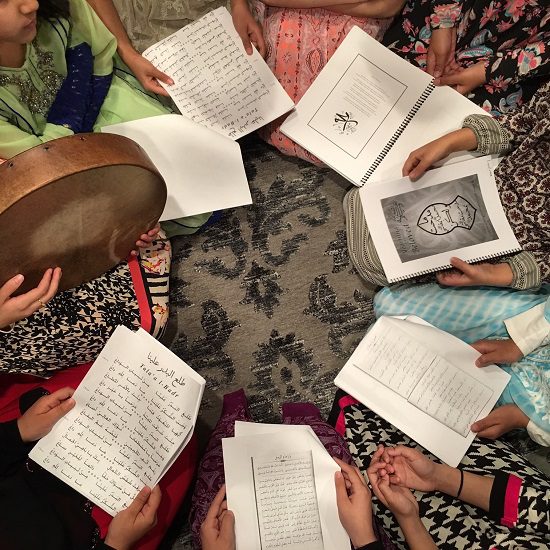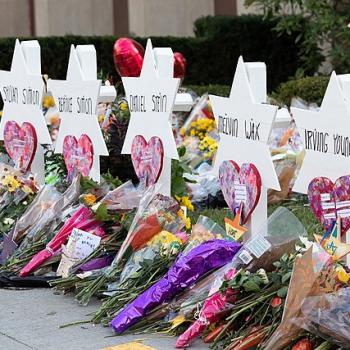As the ‘new hyphenated Americans,’ it would serve the Muslim population to study the struggles of other minorities who have pursued justice and productive integration for their communities. Their experiences have led me to conclude that such minorities have a lot more successful at pressuring and coaxing the American mainstream into listening to their views and to display more understanding – and even sympathy – to their causes, with quite impressive exhibits of tolerance towards them, and at times, adoption of their existence as protected minorities outside legal and political channels. Starting from scratch, these groups have struggled hard and endured much, inventing what were seen then as new methods of social and political engagement along the way. I am both amazed and baffled at their courageous stances and struggles. Even though the journey towards tolerance and positive integration [an integration that both welcomes them into the mainstream society and culture and offers respect for their cultural and other background differences so that they largely remain intact] is far from complete, I believe that they have laid a profound groundwork from which other, relatively newly-established minority communities can benefit in learning. This is even the case when we can learn from groups with whose interests we may not agree, or with whom they may be great tension. I believe they were successful because of factors relating to their internal organizing/effort and because of outsiders (the mainstream) that joined their cause, be it abolition, civil rights, anti-Semitism pre World War II, abortion/’right-to-choose’ movement, or other issues that have had deep impacts on American politics, culture, and society. What I focus on here is some of the internal dynamics within these groups and I offer a short comparison with the American-Muslim minority. Three factors particularly relevant to success or failure has been a community’s own engagement with its youth, the relationship within a community between the national and local levels, and in understanding and utilizing what may be called the concept of “relevance.”
The National-Local Relationship and the “Generation Gap”
We may easily recognize the involvement of national leadership of the African-American community in the Civil Rights Movement. But a fresh look, even among African-American intellectuals, has suggested that the major brunt, inertia, and momentum of the Movement manifested itself in localized activity undertaken by youth/students/young adults in local environments and their unique characteristics and circumstances. Whether it was the Woolworth Sit-in organized and conducted by students in Greensboro, North Carolina, or Rosa Parks’ protest to the seating arrangement in a Montgomery, Al, bus, these seemingly simple and miniscule singular actions provided the spark and jolt that aided prominent national leaders like Dr. Martin Luther King, Jr. and the Southern Christian Leadership Conference (SCLC)㷨 had success and advancements to their own creditϳɮchampioning them as rallying causes for the Movement. And this student leadership experience is not limited to the Civil Rights Movement, as columnist Tonya Jameson writes in The Charlotte Observer that “students have played pivotal roles in social justice movements” such as the Civil Rights Movement, the Chicano civil rights movement of the late 60s, and the anti-apartheid struggle.
A more recent incident in the Charlotte Metropolitan area of North Carolina has provided further evidence to me of potential and necessity of grassroots and youth activity. Sixty-four students of Hispanic origin walked out of school in protest an action of discrimination allegedly involving a few students who reportedly made racial slurs in class about Mexicans as “trash” and “taking jobs” and a teacher who allegedly laughed at these comments. The school sent a bus to retrieve the students, and the students were also given the choice to go home with an excused absence. At least one other protest at another high school in the city followed. Later, however, as the controversy grew from intolerance in public institutions to a debate over immigration reform, the students’ one-hour march attracted “support from observers and their [students’] parents.” [The generational solidarity is not surprising since nearly 400 of the students had joined “more than 100 Latino workers” in a major demonstration 3! ‘economic boycott to show their financial impact’ γ!out two days prior to the incident, and 5000 Latinos “converged” two weeks earlier in conjunction with protests nationwide. At the same time, Latino leaders have been encouraging students to go back to school.] In the height of media coverage, the school’s principal announced that he appointed some of the children to serve as representatives in a dialogue with the school, and that preparation were under way to set up a meeting, which included the diversity coordinator, with the parents and representatives of the Latino community. [These numbers may not be much as larger urban areas, but for Charlotte, a fast-growing metropolitan area and the state’s largest city, they are significant; there are an estimated 2,990 students of Latino origin in the Charlotte-Mecklenburg School system [CMS]. Even the major area newspaper has devoted an entire section to analyze the local and national aspects of the “immigration debate.” North Carolina is a fast-growing destination for many Hispanic immigrants; a drive through Charlotte’s “International District” will give one the impression that it is predominantly Hispanic.]
According to news reports, CMS officials, in a response to a proposed walkout to coincide with general May 1 national protest, more recently announced that they will no longer tolerate any idea of ‘repeated walkouts,’ and that students who walk out are eligible for “suspension by the school principal.” Latino leaders have continued to urge students to stay in their classrooms, but they did not condemn the students’ actions and rather appeared to have supported them. It is amazing, though, how seemingly quickly and strongly Latino parents and representatives showed their support for the students’ April 12 protests. Even more amazing, support and encouragement for the students’ protest efforts (including those prior to April 12) has come from an energetic voice in the region’s main newspaper. In a 23 April opinion piece, columnist Tanya Jameson declared what she saw as American values being embodied in the courage and leadership of these students:
The students who walked out of Charlotte-Mecklenburg schools to protest the treatment of immigrants committed one of the most patriotic and American acts people living in this country could do. They took a stand against bigotry.
The walkouts come at a time when the country is engaged in a passionate, soul-wrenching and sometimes nasty debate over immigration. The students helped show lawmakers, elected officials, school staff and taxpayers that immigrants are more than dollar signs and decimal points; security breaches and guest workers. They’re aspiring college students and future business owners; activists and community leaders.
The walkout got our attention, but the key is for the students to determine their next move. If they organize and build on their momentum, they have a chance to help make Charlotte an even better place to live for people of all ethnicities.
The walkouts recall a bit of history few students learn about. In 1968, Mexican American high school students staged walkouts to protest their treatment in the public school system in Los Angeles. Their fight is detailed in the HBO film, “Walkout,” currently airing on the network.
For students itching to make a statement, but not sure how to do it, watching “Walkout” is a good start. Throughout history, students have played pivotal roles in social justice movements. As adults, we tend to focus on the figureheads: Cesar Chavez, Martin Luther King Jr., Nelson Mandela. But movies have captured the youth involvement in the Chicano civil rights movement, the black civil rights movement and the fight for equal education in South Africa.
We can learn important lessons from these stories. The first one here is the power of grassroots. Muslims have traditionally and largely favored a top-down approach to engagement with the broader society and to social/political activism, whereas other minorities have embraced a mixture of approach that appears very strongly to emphasize grassroots organization and activity. To a greater degree, they have appeared to embrace the principle “think globally, act locally.”
This has not been the case for many Muslims. In cases where Muslim female students have been harassed by teachers or their classmates for wearing the veil, it seems that more so than not that it has been too easy to solicit the aid of the national Muslim level. This is not to say that the national level is not needed or that it is not helpful in these instances. On the contrary, we should all help one another face the challenges and pressures of ‘fitting in.’ But over-reliance on the principle of using the national level as a first resort can do a disservice to the Muslim community by helping to inadvertently weaken its grassroots/local level and can thus weaken the constituency that the national level serves and the very same constituency that provides a base of strength for the national level. It also seems to convey a notion that local/grassroots initiative is insufficient, or that resources for it are insufficient. And perhaps, some of this may be true³ɴmay be that the local/grassroots levels are not, in reality, as effectively or efficiently organized or resourced as the national level. Either way, inadvertently, this can indirectly reinforce the top-down approach. More importantly, a weak grassroots/local level can ultimately weaken the national level as well, and both factors (top-down approach and local weakness) can contribute to a cycle of undoing past achievements.
The second lesson deals with the necessity of the national levels’ embrace, encouraging, and adoption of activism undertaken by youth. Sadly, whether in leadership, tactical assessments, outreach for social/political activism, or other aspects, there still appears to be a considerable generation gap in the Muslim community. The national levels of other minorities3̩e African-Americans or Pro-Israel Americans˳r heavily engaging university students in their work as they expand their scope and influence to the campus environment. Organizations like the NAACP do have university chapters and they appear to also intensely train students/youth. Hillel, one of the major campus-based Jewish associations active throughout the United States, has been one of several involved in efforts to promote discourse sympathetic to official Israeli viewpoints. These efforts were reportedly funded by major national organizations such as AIPAC. Hillel is also known to have ties to encourage and facilitate travels to Israel for campus-based diasporas, to provide intensive ‘advocacy’ programs to train students for the campus environment, and to be also engaged in ‘community partnerships’, presumably empowering students/youth in the process, and to partner with a host of important and influential American and non-American organizations.
The above level of sophistication in activism and engagement, like the examples of the Civil Rights Movement and the Latino students, greatly helps to reinforce grassroots work and the aforementioned principle of ‘think globally, act locally’ because it more effectively sends out the message that students and youth have a stake in the status and progress of their communities. In other words it puts teeth and muscle to phrase “the youth are the future.” It can also help the non-national segments of the community to better network with the national level and assists the local/youth levels to network with other sectors within their immediate geographical locale.
While intensive internships are offered at the national level, the aboveűͥtioned sophistication largely does not appear to be found in the Muslim community, and if a model similar to that used by African-Americans and pro-Israel Americans is employed by the national levels of American Muslim activity, they do not appear to have been strongly visible. To their credit, some major national Muslim organizations do offer intensive youth development and training γ+own in Muslim circles as the practice of tarbiyyah or “upbringing” – and much of this has been in spiritual and personal improvement divided into sessions of recreation such as camping or bowling mixed in with Islamic teachings. This is admirableγn an essential, innovativeijס to attract youth more to their religious roots and needs and to solidify the community from a faith-based perspective. Also, Muslims at the national level have stepped in to advocate on behalf of college students harassed on campus, efforts that reaped very positive results. Yet much more needs to be done if we are train these youth ٳ!d the following generations of the Muslim minority in the United States γ4 look for positive and constructive routes of integration. Specifically, it would do the community well if this spiritual-based initiative is combined with training in social/political/inter-cultural engagement, perhaps a little like the programs that Christian organizations provide for their youth followers to train them to be both politically and socially savvy as well as religiously/spiritually devote, or perhaps the kind of programs that Hillel, with the partnership and support from the larger and major national level, run to provide a way for their Jewish student members to connect with other Americans spiritually and culturally while training them socially and politically. As well, I am concerned about the seeming absence/lack of training from the national Muslim level on campuses and the absence/lack of networking and partnership of this level with students and student organizations on the campuses.
The Concept of “Relevance” in Representation, Communication, and Cultural Socialization
Our society in the United States is one that loves symbolism and representation, because we have so many symbols ϳ!d people γ4at represent various identities like ethnic groups, ideas, and institutions in such a diverse society. Many symbols and representations serve to distinguish: just think of how much pride Americans have, for example, in the hundreds of mascots and logos in professional, collegiate, and high school sports and the teams they represent. Many others serve to unite Americans, such as the “flag” and “patriotism” (especially this one, despite the stances that Americans take on major issues; in fact, those supporting the war on Iraq/Afghanistan and the detentions at Guantanamo Bay and elsewhere, and those opposing them both think of themselves as ‘patriotic’ and ‘American.’) and even abstract principles treated as common values like “freedom” and “democracy.”
With regard to the fluctuating levels of multiculturalism/tolerance/relativism or xenophobia/ distorted ‘nativism’/intolerance, symbolism and representation do matter in integration; though it is one of many factors affecting integration, it can be a major one in facilitating how successfully one minority can convince the American public of its ability to relate to it. Relevance of a minority community to the broader society serves as a potent buffer to the mentality that can produce labels of “the alien other.” Ultimately, relevance should not be such a crucial factor, since one of America’s ‘creed’ ȳ) you will Ƴ) expressed in phrases such as “a nation of immigrants,” the ‘melting-pot’ metaphor, the ‘salad-bowl’ metaphor, and “one nation under God with liberty and justice for all.”
So why would there be the need anyway to consider differences and their relevance as reasons for inclusion? Maybe, one reason for this is that relevance falls victim to subjective interpretation, and so standards for inclusion may be developed with little or no regard to the targeted community’s well-being and interests. As Muslims struggle through the twists and turns of integration, or even ‘assimilation,’ it is not wise or fair to demand of them that they “cave in” to any social, political, cultural, or other pressure in exchange for being accepted as ‘American.’ The challenge, however, is for Muslims to develop an integration ӳ!relevance to American society and culture 34at is mutually acceptable to both the Muslim community (that fulfills Islamic spirit of being Muslim) and the society at large, and that has the public’s recognition of Muslims contributing to the meaning of being ‘American.’ [I am nowhere near suggesting a clash of civilizations; I wish merely to highlight the distance that I believe can be shortened and eventually resolved.]
Sadly, we may find this notion strongly resonant in our nation’s history. For example, African-Americans could not ultimately fight off slavery and gain their civil rights without eradicating the understanding of ‘negroes’ as non-citizens in important documents such as the Constitution, both in letter and deed. In fact, through the Three-Fifths CompromiseȳԨ historic maneuver which facilitated consensus on the iconic documentųԨy were recognized as mere property which entitled congressional representation to its owner and the state in which he/she lived. One of the major purposes of the Civil War Amendments (i.e. the 13th, 14th, 15th) was to redefine free blacks and former slaves as citizens of the United States. Then, when citizenship was achieved, the fight for rights elevated to debate over what constitutes equality; the South recognized blacks as citizens, some of whom were elected to office during the short-lived Reconstruction, but denied equal rights to all by adopting and implementing segregationųծer the misleading claim of “separate, but equal”ijn through other devices such as Jim Crow laws, unfair/un-standardized literacy tests, KKK violence and state complicity in that violence. Beginning in the 1950s, especially through Brown vs. Board of Education, the Supreme Court recognized that “separate, but equal” is “not equal” and that racial segregation of (and later, these other above-mentioned devises) reversed much of the progress and intent envisioned by the Civil Rights Amendments; it prevented African-Americans from equally exercising their citizenship. It was in this prevailing spirit that Civil Rights Act and Voting Rights Act was labored for and passed, and that affirmative action programs were eventually instituted. It is a grave error to assume that that spirit occurred haphazardly; clearly, it needed a push, a momentum engendered by an energetic struggle that engaged both the government and mainstream levels of the society.
Hispanic groups have also noticed this importance of relevance. In a recent interview with talk-show host Tavis Smiley, Maria Elena Salinas, a veteran anchor at Univision (a top U.S.-based Latino television station) commented on the struggle for integration:
“it’s been like a roller coaster… In the early eighties, it was very low-keyed. Hispanics were virtually ignored. Here in Los Angeles, they were 25 percent of the audience, or should I say the population of the city of Los Angeles. We had no political representation in City Hall, the Board of Supervisors, or the Board of Education… come mid-to-late eighties, and we have Pete Wilson, who begins the immigrant bashing with 187, and its spread across the country. That was a very difficult time for immigrants.”
But then something revolutionary happened in Hispanic-American relations, as Salinas, continues:
“And then its funny, but I think that during the nineties, there was pride in being an immigrant. There was pride in being a Hispanic and we owe it to, believe it or not, what we call in Spanish language media our ambassadors of goodwill, which are a lot of the entertainers. Because people all of a sudden began to know the Hispanic community through people like Gloria Estefan, Ricky Martin, Shakira, and Ricky Iglesias. And it was cool all of a sudden now to be able to listen to Spanish-language media (emphasis added).”
It is interesting to note here that Hispanics also have achieved remarkable success in political representation at the local, state, and national levels. In large states like Florida, Texas, and California, a considerable number of House Representatives are Hispanic. Some have also been appointed to high executive posts in the Bush Administration.
As indicated by Salinas’ words, Hispanics were successful in major part because they managed to create innovative and impressive ways to relate to the American public, and more importantly, to convince the American mainstream that they can relate to them. This has been true, but certainly in different ways, for the African-American and Pro-Israeli communities.
I am not implying that American Muslims don’t have incredible “ambassadors” of their own, but I question why their appeal has seemingly been specific in field or environment, such as interfaith dialogue and charitable projects, or that their visibility is limited to academic/scholarly arenas such as conference halls, documentaries, public television roundtables. And these are important fields, but social and political engagement needs to go much further. How about visibly Muslim television news anchors or talk-show/comedy/other hosts on major television networks; Muslim community service practitioners majoring in social work and tackling poverty or AIDS [or some other area where there has not been significantly visible Muslim presence]; for Muslims to collaborate on a television show whose story could be based on the “average American-Muslim family” ij3mething like a Muslim version of The George Lopez Show (ABC), American Family (PBS), or a Muslim version of The Bill Cosby Show, My Wife and Kids (UPN), or Family Matters. These shows have been a successful way for socializing mainstream America to accept and integrate the minorities they talk about as well as providing a good platform to inform the mainstream of their views; networking and partnership initiatives/programs/training/and feedback between the national level and Muslim students (such as the assistance that Hillel gets from AIPAC, or the youth leadership programs NAACP provides to Black students); or partnership between national and local levels to encourage and help elect Muslims to local representative bodies such as city hall, state congresses/assemblies, and eventually to the U.S. Congress? Yes, a part of this is recognizably due to the major distance faced by Muslims coming from the mainstream side. But a part of this is also due to the weaknesses found within the Muslim community, such as a lack of effective coordination and distribution of effort. But these are not things that cannot be remedied.
So where do we go from here?
It is not wise to suggest that we follow the Hispanic community’s (or any other community’s) evolution as a cookie-cutter model; but Muslims need to search deeply within themselves and within others to tap into under-used potential, and see the value of creative and unused methods and ideas, and to implement these in areas not charted beforeϳras like institutions that inform the masses and shape public discourse such as academia and the college campus, fictional or realistic TV drama. Some work has been done, but this is no where near enough. This endeavor is noticeably difficult, but I am confident that it cannot be impossible. It will take a lot of sincere effort, coordination (to tackle serious dividing issues such as the ones mentioned above), and sincere determination.
Footnote: About a year ago, CAIR has established “Muslims Care“, what it identifes as an “annual campaign” to promote volunteerism. The website contains a fairly exhaustive database of volunteer opportunities, a toolkit for setting volunteerism committees. Every year, the campaign appears to run for three months: June, July, August–each of which has a different theme attached to it.
Muslim American Society (MAS) Freedom Foundation Wing runs an activist training seminar, “a day-long series of workshops” which appears to be youth-centered, in addition to its “Muslim Youth Program” which focuses on spiritual tarbiyyah.
In addition to organizations running internships, these-above posted programs are impressive in so much as being the first of their kind in the Muslim community, and they are very good and commendable starts. There very well may be similar programs by other organizations/organized efforts.
The website of the Muslim Public Affiars Council also lists an internship, lists areas of work–such as media relations, combatting hate/descrimination, Islam awareness–that are very similar to what other Muslim organizations, as well as a unique features like an anti-terrorism campaign, Media Awards fesitival, and an academic-type journal.
In general, however, Muslim engagement with its own youth still appears to be limited in comparison with other minority groups, and the distance created by the generation gap appears to be more pronounced in the Muslim community as compared with other minorities, and local Muslim grassroots organization/activism appears to be less developed in the Muslim community.
Motazz Soliman graduated with a cum laude degree in Political Science and International Studies, and writes regularly on the Middle East and the Arab-Islamic World. He has published a thesis on the Libyan foreign policy reorientation in the The Maghreb Review (London), and has completed an internship with the Washington Report on Middle East Affairs and CAIR.











